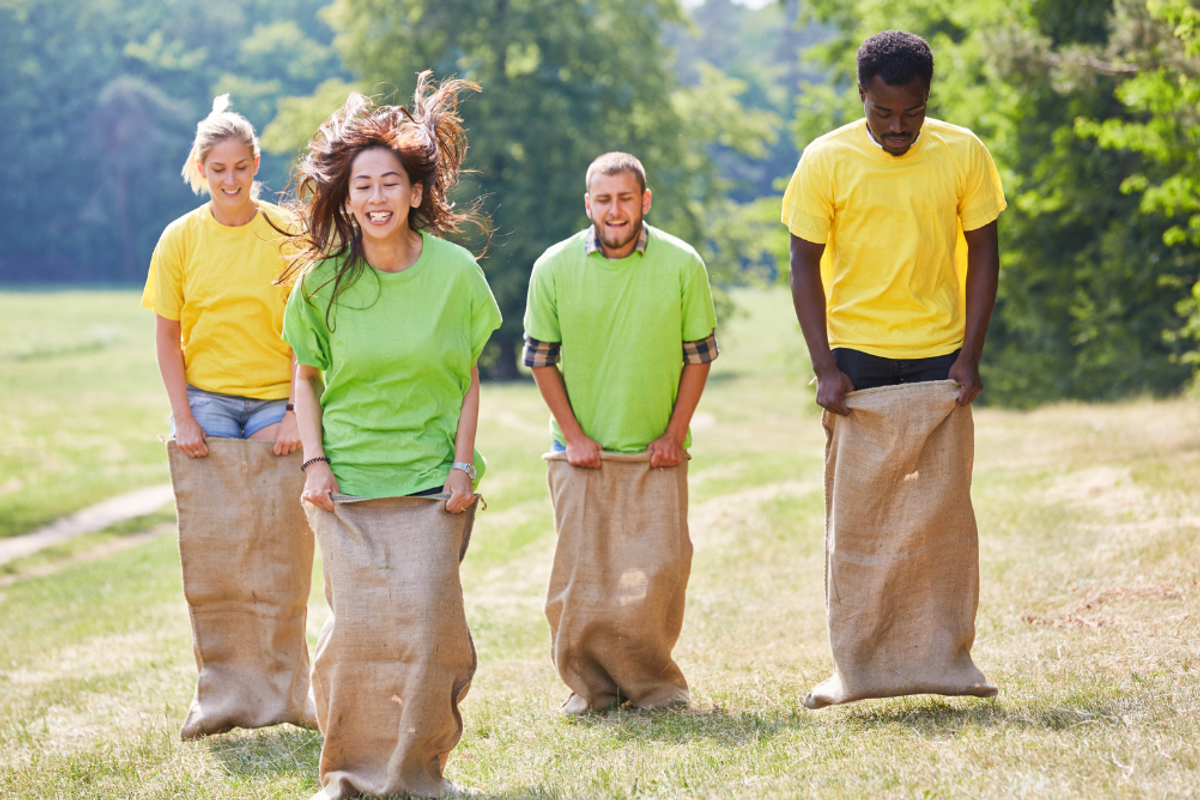Health experts agree that adults should have recess, too
Giving grown-ups time to play boosts physical, mental, and social health. Plus, it’s fun!

Playtime is beneficial at any age.
Have you ever wished you could just stop at your desk for thirty minutes and go outside to play a game, jump around a bit, or even just play with play dough for a while? Well, what’s stopping you? Experts say that taking a recess period isn’t just good for kids, but is good for adults, too.
The National Library Medicine has a 2022 study showing how “playtime” and recess helps the physical and mental well-being of adults along with a 2018 study showing how playing helps improve the lives of mentally ill seniors, too. But doesn’t it seem childish? Is it just nostalgia? Is it just… Well, needless fun?
In an interview with CNN, Dr. Bowen White, a physician and head of the National Institute of Play, a non-profit group that researches the benefits and history of recreation, provided some insight:
“Play is essential to our health,” he says. “Your blood pressure goes down. You release dopamine.”

He’s not wrong. Play isn’t just fun, it’s healthy. Many activities that you used to play as a kid require you to go outside, which is both physically and mentally healthy. While it’s important to exercise, working out is part of the job of being an adult. The word “work” is in it. Playing in a dodgeball league or a game of double-dutch as an adult adds in some extra physical activity that can benefit you. Also, playing in general leads to laughter, which can reduce stress, lower blood pressure, and provide cardiovascular benefits like physical games do.

If you’re more in the mood for some less physical activity, doing more relaxing forms of play like playing board games, coloring in a coloring book, or sculpting with play dough can also release endorphins like those other recess activities while also stimulating your brain, improving your problem solving skills and increasing your imagination. Through fun!
Because of these benefits, many employees get better ideas, collaborate better with coworkers, and just plain work better when given time away from their desk to play around a little. There’s a reason why the “office foosball table” has become a popular trope in corporate America.
And the desire and instinct to play isn’t a human invention, it’s evolution.
“Play is so deeply ingrained in terms of our own evolutionary drive to survive,” said Bowen. “We all come into the world knowing how to play.”
Playtime is just a part of our evolution according to Scientific American. It’s also in nature. You’ve seen animals play with one another, likely from your own pets or certain articles here on Upworthy, and it’s not taught to them from human behavior. It’s an instinctual way for young animals to learn certain hunting or gathering skills, find mates, and create allies through social interaction to ensure better survival and lives in the world. Same with humans.
So to recap: Having some form of recess isn’t childish, is beneficial to your overall health in all aspects, is a part of human evolution, and is a part of nature itself. Oh, and it’s fun, too. So how can you incorporate more of it in your life, especially since we’re all so busy all of the time?
Well, it’s best to carve out some time for yourself to play each day, much like you had done at school. When you have a lunch break, take it. Use that time to not just eat, but to play. Go to a nearby park and shoot some hoops, on your own or in a pick-up game. Don’t worry if you suck, that’s not the point. After work, carve out time to go to a batting cage to hit some balls or a barcade to play games. Look into any clubs or intramural sports in your area, maybe join a dodgeball team or bar trivia night. Even if you’re so busy that you can’t make time outside of work or have too short of a lunch break, play a game with a coworker while you both eat. At the least, you can get some benefit from playing a game on your phone against other people online while you have lunch.
If you have young children that need your attention, you can indulge in play with them! Playing with your child in games or activities they enjoy gives you the aforementioned playtime benefits plus better bonding with them. It doesn’t mean you always have to play at their level all of the time either. For example, if your kid likes to color, you and your little one can color in your own separate coloring books, you with your adult coloring book and them with their less complex one while you share crayons. If they like to jump rope, jump along with them and see if you can keep up with their energy.

There’s another reason why adults need recess that should be reiterated: It’s fun.
Life goes by fast and can sometimes end abruptly, unexpectedly. It’s not to scare anyone, it’s just a fact. So isn’t it best to grab as much fun as you’re able to get when it’s accessible? Based on the data here, fun is far from a waste of time as it appears on the surface. Hope you all have a fun life.


